24 Hours Hotline: +86 137-3541-1378
Email:shanghai@tripstoshanghai.com
24 Hours Hotline: +86 137-3541-1378
Email:shanghai@tripstoshanghai.com
Tour Style:
Discover the essence of Southern China on this immersive 7 Days Tour in Guangzhou & Beyond. This carefully curated tour offers an enriching blend of culture, history, and modern vibrancy, with visits to iconic landmarks and hidden gems in Guangzhou, Hong Kong, Macau, Zhuhai, and Foshan. Explore the rich heritage of Guangzhou’s traditional architecture and cultural sites, from ancient temples to the stunning Chen Clan Ancestral Hall. Journey through Hong Kong’s dynamic skyline, experience the charm of Macau’s Venetian resorts, and marvel at Zhuhai’s coastal beauty. The tour also takes you through the cultural heart of Foshan, renowned for its martial arts heritage. With expert guides leading the way, this comprehensive tour from Guangzhou promises a seamless and unforgettable experience, blending both relaxation and adventure. Perfect for those seeking to explore the diverse landscapes and cultures of one of China’s most exciting regions.
Duration: 7 Days, 6 Nights
Attractions(Cities):
Guangzhou, Hongkong, Macao, Zhuhai
Pick-up point:
Your hotel in Guangzhou (based on your requirement)
Finishing point:
Your hotel in Guangzhou (based on your requirement)
Tour Customizable:
Absolutely! (Tell us your requirements in your inquiry)
Payment Types:
Cash, Wire, Paypal, WesternUnion, Wechat, Alipay, PayPal
Available: Daily
Day 1 Arrival in Guangzhou: Free & Easy
Day 2 Guangzhou: Chen Clan Ancestral Hall, Yongqingfang, Cantonese Opera Art Museum, Huacheng Square
Day 3 Shenzhen-Hongkong: Shenzhen Luohu Port, West Kowloon Art Park, Hong Kong Palace Museum, Victoria Peak, Tsim Sha Tsui Clock Tower, Sightseeing Bus
Day 4 Hongkong: Hong Kong Disneyland, Hong Kong Ocean Park, The University of Hong Kong
Day 5 Hong Kong-Macao-Zhuhai: Hong Kong-Zhuhai-Macao Bridge, Grand Taipa Viewing Platform, The Venetian Macao Resort Hotel, Coloane St. Francis Church, Fortaleza do Monte, Love Lane
Day 6 Zhuhai-Guangzhou: Zhuhai Fisher Girl, Yeli Island, Zhuhai Grand Theater, Foshan Ancestral Temple, Beijing Road Pedestrian Street
Day 7 Guangzhou: Free & Easy
Upon your arrival at the airport or railway station in Guangzhou, our professional tour guide will be waiting to pick you up. He or she will hold a sign with "Your Way Holiday" written on it, so you can easily spot them. The guide will warmly greet you, help with your luggage, and then escort you to the pre-booked hotel in Guangzhou for check-in. This arrangement allows you to avoid the hassle of finding transportation on your own after a long journey. For the rest of the day, you will have free time to explore Guangzhou at your own pace. As a city that blends traditional culture and modern vitality, Guangzhou offers a variety of options. You can wander around the bustling commercial streets to feel the city's dynamic atmosphere, or look for local snack stalls to taste authentic Cantonese delicacies like dim sum, wonton noodles, and roasted pork. If you prefer a quiet environment, you can take a stroll in a nearby park and experience the leisurely lifestyle of the local people. In the evening, the guide will contact you to confirm the meeting time for the next day's itinerary and remind you of relevant matters. After that, the guide will ensure you return to the hotel safely and wish you a pleasant rest.

Kicking off our cultural exploration and escort you to Chen Clan Ancestral Hall—a pinnacle of Lingnan architectural art completed in 1894 during the reign of Emperor Guangxu of the Qing Dynasty. As you step through the imposing three-eaved main gate, the guide will pause to draw your attention to the intricate brick carvings above the lintel, which depict 24 scenes from "The Romance of the Three Kingdoms" with astonishing precision—each figure’s expression and posture vividly rendered, a testament to the craftsmanship of Lingnan artisans. Wandering through the courtyard, he will explain that the ancestral hall follows the traditional "nine halls and eighteen courtyards" layout, where the central axis aligns with the main halls to reflect the strict patriarchal hierarchy of ancient clan society. You’ll get up close to the exquisitely carved wooden brackets (dougong) supporting the roof—each adorned with lifelike birds, flowers, and mythical creatures—and the guide will share that over 100 local artisans spent 20 years crafting these masterpieces, using techniques passed down through generations. He will also point out the colored glaze tiles on the roof ridges, which feature dragons, phoenixes, and legendary beasts, not only for decoration but also to symbolize the clan’s prosperity and nobility. Additionally, the guide will introduce the hall’s dual role as a clan gathering place and an academy: in the past, it hosted ancestral ceremonies during festivals and provided education for clan children, helping you grasp how clan culture shaped social order and education in Lingnan.
.jpg)
.jpg)
From the grandeur of traditional clan architecture, we’ll shift to a spot where Lingnan’s past and present collide—Lingnan Yongqingfang. Our guide will lead you along the narrow lanes, pointing out the well-preserved qilou buildings that are iconic of southern China. These structures, with their ground-floor arcades and upper-floor residences, were designed to shield residents from the region’s frequent rain and scorching sun, and the guide will explain how this architectural adaptability reflects Lingnan people’s wisdom. Amidst the old buildings, you’ll stumble upon trendy boutiques, indie art galleries, and cozy coffee shops, and he will share the "renovation without destruction" concept behind Yongqingfang’s transformation—historic facades were retained while interiors were updated to meet modern needs. He’ll also recommend hidden gems like a century-old herbal tea shop where you can taste authentic lingnan herbal tea, and a small workshop where local craftsmen demonstrate the art of making Cantonese ivory carvings. As you snap photos with the vibrant street art that blends traditional patterns with contemporary styles, the guide will highlight how this district has become a cultural bridge connecting generations.
.jpg)
.jpg)
After soaking in the old and new vibes of Yongqingfang, it’s time to savor the flavors of Guangzhou at lunch. Our guide will take you to a local restaurant favored by residents, where the menu embodies Cantonese cuisine’s core tenets: emphasizing fresh ingredients, highlighting natural flavors, and mastering delicate cooking techniques. As you take your seat, he will explain why Cantonese people are known as "gourmets"—their culinary culture values seasonal ingredients, so the menu changes regularly to showcase the best of each season. For your meal, the guide will recommend signature dishes: steamed perch with soy sauce, where the fish is cooked just right to retain its tender texture and sweet flavor; white-cut chicken, a classic that tests the chef’s skill in controlling heat to keep the meat juicy and the skin smooth; and fried beef river, where the rice noodles are stir-fried to be chewy without being sticky. He will also teach you small dining etiquettes, like not sticking chopsticks upright in the rice, and share stories about how these dishes evolved from family meals to renowned delicacies. Every bite will be a journey into Guangzhou’s culinary heritage.
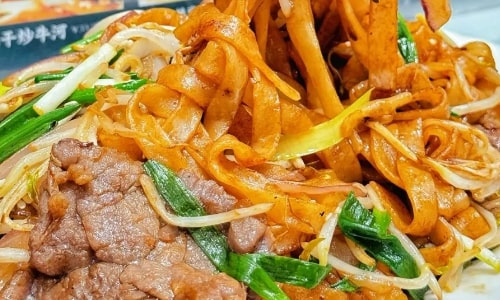

Refreshed by the delicious lunch, we’ll dive deeper into Cantonese culture with a visit to the Cantonese Opera Art Museum—an institution dedicated to preserving and showcasing this intangible cultural heritage. Our guide will start by taking you to the costume exhibition hall, where rows of elaborate costumes in bright colors and intricate embroidery are on display. He will explain the symbolism behind each element: for example, costumes with dragon patterns are reserved for imperial characters, while peacock embroidery represents elegance and nobility. Moving on to the musical instrument section, the guide will pick up a small gong and strike it gently, demonstrating how different percussion instruments set the rhythm of the opera, and introduce the erhu and pipa, which add melodic layers. As you browse through old scripts and photos of famous performers, he will trace Cantonese opera’s development from folk songs to a sophisticated art form with distinct singing styles and performance techniques. If a mini-performance is scheduled, the guide will sit beside you and interpret the plot—often based on historical stories or folk legends—and point out subtle gestures, like a flick of the sleeve or a turn of the head, that convey the character’s emotions. By the end of the visit, you’ll have a newfound appreciation for this unique art form.
.jpg)
.jpg)
As the afternoon unfolds, we’ll head to Huacheng Square, the beating heart of Guangzhou’s new central axis, to witness the city’s modern grandeur. Our guide will lead you to the central viewing area, where you’ll be greeted by a panoramic view of iconic buildings that define Guangzhou’s skyline. He will start with the Canton Tower, affectionately known as "Xiaomanyao" (the slender waist) for its unique twisted shape, explaining how its design combines engineering innovation and artistic beauty—it’s one of the tallest towers in the world, with a glass observation deck that offers breathtaking views. Next to it stands the Guangzhou Library, whose architectural style resembles a stack of open books, and the guide will share that it houses over 10 million volumes, making it a paradise for book lovers. He’ll also point out the Guangzhou Opera House, designed by the renowned architect Zaha Hadid, with its fluid, sculptural form inspired by river pebbles. As you stroll along the plaza’s lakeside path, the guide will mention that the plaza is not just a tourist spot but also a public space where locals gather for morning exercises, evening walks, and cultural events. You can stop to take photos with the fountains that dance to music, and he will capture group shots for you, ensuring you have memories of Guangzhou’s modern charm.
.jpg)
.jpg)
As dusk falls, our guide will gather everyone and do a quick headcount to ensure no one is left behind before escorting you back to the hotel safely. On the way, he will give a lively preview of tomorrow’s Hong Kong adventure—from the convenience of Luohu Port customs clearance to the allure of Victoria Harbour. Before bidding you goodnight, he will make sure you have his contact information in case of any questions, ensuring you rest easy knowing tomorrow’s journey is well-prepared.
Bright and early, our guide will meet you at the hotel and lead the way to Shenzhen Luohu Port—the busiest land border crossing between the Chinese mainland and Hong Kong. With years of experience navigating customs, he will walk you through every step: the guide will first check that everyone’s passports and entry permits are valid and properly filled out, then explain the queueing process for both mainland and Hong Kong customs. He’ll share practical tips, like removing electronic devices from your bag in advance to speed up security checks and keeping your documents handy at all times. If any of you have special needs, like traveling with children or the elderly, the guide will coordinate with customs staff to ensure a smooth passage. Throughout the process, he will stay close by, making sure the group stays together and answering any last-minute questions, turning what could be a tedious procedure into a hassle-free experience.
.jpg)
.jpg)
Once we’ve cleared customs and stepped into Hong Kong, our first stop is West Kowloon Art Park—an urban oasis that blends art, ecology, and public leisure. Our guide will lead you to a elevated viewing platform where you can take in the park’s full layout: sprawling lawns dotted with art installations, a waterfront promenade overlooking Victoria Harbour, and modern pavilions that host temporary exhibitions. He will explain that the park was built as part of Hong Kong’s efforts to promote public art, and many of the installations are created by local artists, reflecting the city’s diverse culture. For example, the guide will point out a large sculpture made of recycled ocean plastic, which raises awareness about environmental protection—a cause close to Hong Kong’s heart as a coastal city. Even from the outside, you can feel the park’s vibrant energy, with locals flying kites on the lawns and families having picnics. He will take a group photo here with the Hong Kong skyline in the background, marking the start of our Hong Kong exploration.
.jpg)
.jpg)
From the outdoor art of West Kowloon, we’ll move indoors to the Hong Kong Palace Museum—a cultural landmark that opened in 2022, housing over 900 precious relics on long-term loan from the Palace Museum in Beijing, plus its own collection of 1,000+ pieces of Chinese art. Our guide will start with the museum’s architecture, designed by a team led by Rocco Yim: the roof features a modern interpretation of the "dougong" bracket system from traditional Chinese palaces, while the 40-meter-high glass facade lets in natural light to illuminate the relics without damaging them. He will note that the museum’s layout follows the concept of "a treasure box in the mountains," with its terraced structure blending into the West Kowloon skyline. Inside, he will lead you through themed galleries, starting with the "Treasures of the Palace Museum" exhibition. The guide will stop at a Ming Dynasty blue-and-white porcelain vase with "phoenix and peony" patterns, explaining that it was fired in the imperial kilns of Jingdezhen—only 37 such vases are known to exist worldwide, and its delicate underglaze blue patterns were painted by hand using mineral pigments imported from Persia. Next, he’ll show you a Qing Dynasty imperial dragon robe worn by Emperor Qianlong: made of silk brocade, it’s embroidered with 12 imperial symbols (including the sun, moon, and dragons) in gold and silver thread, and the guide will clarify that the number of claws on the dragons (five) was exclusive to emperors—nobles could only use four-clawed dragons. For calligraphy lovers, he will highlight a scroll by the Song Dynasty calligrapher Su Shi, titled "Cold Food Observance," explaining its free-spirited brushwork reflects Su Shi’s frustrated mood during his political exile. The guide will also share behind-the-scenes stories: the relics were transported to Hong Kong in temperature-controlled vehicles with 24-hour security, and the museum uses advanced humidity and light control systems to preserve them.
.jpg)
.jpg)
After immersing ourselves in ancient treasures, it’s time to taste the flavors of modern Hong Kong with lunch. Our guide will take you to a local cha chaan teng—a casual dining spot that’s the heart of Hong Kong’s culinary scene. As you enter, you’ll be greeted by the aroma of coffee and freshly baked pastries, and he will explain that cha chaan tengs emerged in the 1950s as a fusion of Chinese and Western cuisine, catering to Hong Kong’s fast-paced lifestyle. The guide will recommend must-try dishes: Hong Kong-style milk tea, which is brewed with a blend of black teas and evaporated milk, then strained through a cloth bag multiple times to get a smooth texture; pineapple bun with butter, where the sweet, crispy bun pairs perfectly with the salty butter; char siu rice, with tender barbecued pork glazed in a sweet-savory sauce; and won ton noodles, with plump won tons filled with shrimp and pork, served in a clear broth. As you eat, the guide will share stories about how cha chaan tengs have become a social hub, where locals gather for breakfast, lunch, and even late-night snacks, giving you a taste of Hong Kong’s daily life.

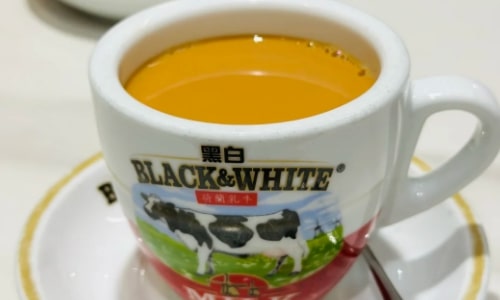
Fueled by our cha chaan teng feast, we’ll head to Victoria Peak—Hong Kong’s "backbone" towering 552 meters above sea level, known locally as "The Peak." Our guide will take us to the Peak Tram terminus, a historic site since 1888, and explain that this funicular railway is one of the oldest continuously operating transportation systems in Asia. He will share that the tram’s track is 1.4 kilometers long, with a maximum gradient of 45 degrees—so steep that as we ride up, the buildings below will appear to tilt forward, creating a unique "tilting city" visual effect. Once at the top, he’ll lead us to Sky Terrace 428, the highest outdoor viewing platform on the Peak, where we’ll have a 360-degree view of Hong Kong. The guide will use a portable map to identify key landmarks: the ICC (International Commerce Centre) in Kowloon (484 meters tall, Hong Kong’s tallest building), the Bank of China Tower in Central (with its triangular design inspired by bamboo, a symbol of resilience), and the scattered outlying islands like Lantau and Cheung Chau. He will also share the Peak’s history: in the 19th century, it was a retreat for British colonial officials who built summer villas here to escape the lowland heat—many of these villas have been converted into luxury hotels today. The guide will suggest the best photo spots: the "Harbour View Point" at sunset, when the sky turns orange and the harbour’s lights start to twinkle, and he’ll even help adjust your camera’s exposure to capture the perfect shot. If the weather is clear, he will point out the Shenzhen skyline across the border, explaining how Hong Kong and the mainland have grown into a integrated economic zone. Before leaving, he will take a group photo with the skyline as the backdrop, ensuring everyone has a memorable souvenir.
.jpg)
.jpg)
After taking in the breathtaking views from Victoria Peak and descending via the historic Peak Tram, the group proceeds to the Tsim Sha Tsui Clock Tower—a 44-meter red brick structure built in 1915 and an iconic historical relic that has witnessed Hong Kong's development for over a century. Originally part of the Kowloon-Canton Railway Terminus—the former gateway for transportation between Hong Kong and the mainland—the tower features a Baroque-style top and a British-imported clock that still keeps accurate time, chiming every hour. The guide shares the railway's history, explaining its role in transporting goods and people between Hong Kong and Guangzhou in the early 20th century, and notes that the tower was preserved as a historical monument after the terminus relocated in 1975. The group wanders the small garden surrounding the tower, and the guide takes photos of members with the tower and harbour as the backdrop, highlighting that it remains a popular meeting spot for locals. From the clock tower, the group boards an open-top sightseeing bus to explore Hong Kong's diverse districts.
.jpg)
.jpg)
Once aboard the open-top Sightseeing Bus, the group begins a tour covering Hong Kong's diverse districts, with everyone seated on the upper deck to enjoy optimal views. The guide distributes multilingual commentary headsets and supplements the commentary with local insights. As the bus passes through Central's financial district, the guide points out a hidden Taoist temple built in 1847, a quiet contrast to the surrounding skyscrapers. In Mong Kok, the guide highlights the bustling street markets known for affordable clothing and street food, offering to arrange a return visit if desired. Along the coast of Repulse Bay, the guide shares the beach's history as a colonial-era retreat. The bus makes stops at key viewpoints, such as the harbour overlook, to allow for photography. The guide emphasizes the distinct personalities of each district—Central's corporate vibe, Mong Kok's liveliness, and Repulse Bay's serenity—that collectively define Hong Kong's charm. After the bus tour, the group returns to the Hong Kong hotel to rest, with the guide providing a preview of the next day's academic and leisure itinerary.
.jpg)
.jpg)
The day begins with a visit to Hong Kong Disneyland Resort for an exterior tour. The group gathers at the main entrance, where the iconic Sleeping Beauty Castle stands in the distance, its spires adorned with colorful flags. The guide describes the castle's design, which blends European fairy-tale architecture with subtle Chinese elements such as dragon motifs carved into the stone. Walking along the resort's perimeter, the group can see the distinct themes of different lands: Adventureland, with tropical vegetation and pirate ships; Fantasyland, featuring whimsical rides and fairy-tale characters; and Tomorrowland, characterized by futuristic buildings and space-themed attractions. The guide shares the resort's history, noting its opening in 2005 and adaptations to local culture, including Chinese New Year celebrations and Hong Kong-style snacks served within the parks. Even from the outside, the festive atmosphere is palpable, with parades of fairy-tale characters (when scheduled) and music echoing through the area. The guide takes photos of the group with the castle as the backdrop, capturing the magical ambiance of the resort.
.jpg)
.jpg)
From Hong Kong Disneyland Resort, the group travels to Hong Kong Ocean Park for an exterior exploration. The guide leads the group to a vantage point overlooking the park's two main areas—Waterfront and Summit—connected by a cable car that glides over the mountains. Opened in 1977, the park is both an amusement park and a leading marine conservation center. From the outside, the giant dome of the Grand Aquarium is visible, housing over 5,000 marine creatures including rare species like whale sharks and manta rays. The guide also points out thrill rides such as the Hair Raiser, a roller coaster that hangs over the coast, and explains the park's balance of entertainment and education through interactive exhibits. The guide shares details about the park's conservation efforts, including its breeding program for Chinese white dolphins and marine protection campaigns, as well as the Panda Habitat, which houses pandas gifted by the Chinese mainland to Hong Kong. The park's vibrant colors and exciting attractions reflect its popularity among both locals and tourists.
.jpg)
.jpg)
Lunch is served at another classic cha chaan teng, offering deeper insights into Hong Kong's daily culinary life. Cha chaan tengs are a reflection of Hong Kong's fast-paced lifestyle, known for efficient service, hearty portions, and budget-friendly prices. The guide recommends signature dishes with local twists, such as baked pork chop rice (pork marinated in soy sauce and honey, baked with rice and tomato sauce), macaroni with ham and egg (a fusion of Western macaroni and Chinese-style scrambled eggs), and Hong Kong-style lemon tea (strongly brewed, sweetened with condensed milk, and served over ice). The guide demonstrates how to mix the lemon tea for the perfect balance of sweet and sour and shares the restaurant's heritage, noting that the owner's family has maintained traditional recipes for generations. As the group dines, they are immersed in the buzz of local Cantonese conversations, with the guide translating snippets to provide a glimpse into Hong Kong's lively dining culture.

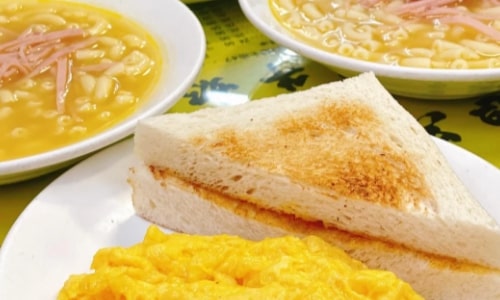
Refreshed after lunch, the group visits the University of Hong Kong (HKU), a top-tier academic institution founded in 1911 and consistently ranked among the world's top 20 universities. With a guide who has an educational background, the group embarks on a campus tour that integrates history, architecture, and academia. The tour begins at the Main Building, a red brick Neo-Gothic masterpiece completed in 1912 and designated a historical monument in 1984. The guide points out its distinctive clock tower, which chimes every 15 minutes, and explains that the design draws inspiration from Oxford and Cambridge universities while incorporating Lingnan adaptations like curved eaves to suit Hong Kong's rainy climate. Inside, the group visits the Great Hall, with its high vaulted ceilings, stained-glass windows depicting Chinese landscapes, and wooden paneling—an elegant venue that has hosted important events including the graduation of Tung Chee-hwa (Hong Kong's first Chief Executive) and lectures by Nobel laureates like Marie Curie. The tour proceeds to the Centennial Campus, a modern addition opened in 2012 to mark HKU's 100th anniversary, featuring eco-friendly designs such as green roofs, rainwater collection systems for irrigation, and natural ventilation to reduce air conditioning use—reflecting the university's commitment to sustainability. The group also visits the University Museum and Art Gallery, housed in the 1932 Fung Ping Shan Building, where highlights include a Tang Dynasty tri-color glazed pottery horse (renowned for its vivid hues and dynamic posture) and a Ming Dynasty scroll painting of the Yangtze River by Wu Bin. Along the tree-lined University Mall, the group observes students studying and socializing. The guide details HKU's academic strengths—law, medicine, and business consistently rank among the world's top 10—and introduces famous alumni such as Sir David Tang (founder of Shanghai Tang) and Michelle Yeoh (Oscar-winning actress). The guide also shares campus traditions, including "Welcome Week" treasure hunts for new students and the annual HKU Open Day that attracts over 10,000 visitors. Before leaving, the guide takes a group photo in front of the Main Building's clock tower, a iconic spot for HKU graduates.
.jpg)
.jpg)
After the campus tour, the group has two hours of free time to explore the area around HKU. The guide points out nearby attractions including Sai Ying Pun (a neighborhood with trendy cafes and vintage shops) and Western Market (a historical building now housing craft stores and restaurants), as well as local snack spots such as an egg waffle shop—offering tips on ordering Hong Kong's famous street food. The guide remains nearby and accessible by phone to assist with directions or inquiries. As the afternoon ends, the guide gathers the group and returns to the hotel. On the way, the guide provides a detailed briefing on the next day's trip to Macao, covering the ferry boarding process, reminders to bring passports and Macao entry permits, and an overview of Macao's Sino-Portuguese cultural fusion. The guide also recommends packing light jackets to cope with Macao's cool coastal breezes in the evening. Upon returning to the hotel, the guide ensures all members check in safely and wishes them a restful night before the cross-border journey.
In the early morning, after breakfast at the Hong Kong hotel, the group gathers with luggage as the guide conducts a final check of passports, Hong Kong exit permits, and Macao entry permits—essential documents for the cross-border journey. The group then departs for the Hong Kong China Ferry Terminal, a bustling hub connecting Hong Kong to Macao with frequent high-speed ferries. The guide efficiently assists with ticket verification, baggage check-in, and security procedures, ensuring smooth boarding. During the voyage, members can enjoy views of Hong Kong’s western coastline and distant islands from the observation deck. Upon arriving at Macao’s Outer Harbour Ferry Terminal, the unique blend of Portuguese colonial architecture and modern high-rises greets the group. After a short car ride, the first stop is the Hong Kong-Zhuhai-Macao Bridge (HZMB)—a world-renowned cross-sea mega-project and one of the longest sea-crossing bridges globally. As the car travels along the marine section, the guide details its groundbreaking engineering: a sea-crossing bridge, an undersea tunnel (to avoid disrupting shipping lanes), and artificial islands connecting the two. He explains the tunnel was built with prefabricated segments to minimize environmental impact on sensitive ecosystems like Chinese white dolphin habitats. Through the bus windows, the group admires the vast Pearl River Estuary with passing cargo and fishing boats, while the guide emphasizes the bridge’s strategic significance—greatly shortening travel between the three cities and strengthening economic and cultural ties.
.jpg)
.jpg)
After marveling at the HZMB’s engineering, the group heads to Grand Taipa Viewing Platform—locally called "Macao’s Balcony" for its unrivaled panoramic views. Perched on a gentle slope in central Macao Peninsula, the lookout offers 360-degree vistas blending diverse landscapes. On the viewing platform, the guide points out key landmarks: the colonial-era buildings of the UNESCO-listed Historic Centre of Macao (including the Ruins of St. Paul’s) to the north; Cotai’s glittering resort skyline to the south; the South China Sea with Taipa and Coloane islands to the east; and the Zhuhai border with mixed high-rises and low-rise neighborhoods to the west. The guide shares that the lookout was once a Portuguese colonial military observation post, later converted into a public scenic spot. Old banyan trees line the platform, providing shade and tranquility.
.jpg)
.jpg)
With the morning’s sightseeing done, the group heads to a local eatery in Taipa Village to savor authentic Macanese cuisine—a unique fusion style born from over four centuries of Portuguese rule, blending Portuguese ingredients with Chinese cooking techniques and local produce. The guide walks through the menu and highlights must-try signature dishes. African chicken is a standout: a spicy, aromatic stew where chicken simmers in a sauce of chili, garlic, coconut milk, and tamarind, its name tracing to 16th-century Portuguese sailors who introduced chili peppers to Macao. Another classic is bacalhau à brás, a reimagined Portuguese dish that combines shredded salted cod with potatoes, onions, eggs, and black olives. For dessert, the guide recommends Macanese egg tarts—distinct from Hong Kong’s version with a thicker, flakier crust and richer, more eggy custard, a nod to Portuguese pastel de nata heritage. The meal concludes with a cup of strong, sweet Portuguese coffee, a perfect finish to the culinary experience.
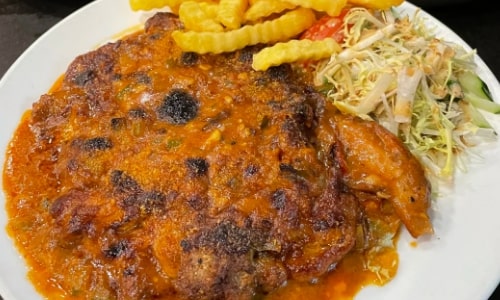

After lunch, the group travels to Cotai—reclaimed land between Taipa and Coloane islands—to visit the Venetian Macao Resort Hotel, Asia’s largest integrated resort and a Macao icon. Opened in the 2000s, the sprawling resort features thousands of hotel rooms, a large casino, a vast shopping mall, and diverse entertainment venues. The grand lobby impresses with a towering crystal chandelier and polished marble floors. The guide leads the group to the famous Grand Canal Shoppes, designed to replicate Venice’s canals. Three interconnected canals are lined with cobblestone paths, colorful shops, and a mini St. Mark’s Square replica. The painted sky ceiling shifts light to simulate different times of day. Members can opt for gondola rides (at own expense), with gondoliers singing Italian folk songs. The guide explains the resort’s Italian-Asian fusion—luxury shops with Western and Asian couture, food courts offering Italian and Cantonese fare. He notes the Venetian played a key role in transforming Cotai from marshland to a global tourism hub.
.jpg)
.jpg)
Leaving the bustling resort behind, the guide takes the group to Coloane Island, a quieter part of Macao, to visit Coloane St. Francis Church. Tucked in a peaceful village square, the church’s whitewashed walls and red-tiled roof exude colonial charm. The guide explains that the church was built in the 1920s, replacing an 18th-century wooden chapel, and blends Gothic and Romanesque styles. Inside, he points out the stained-glass windows depicting St. Francis of Assisi and the statue of Our Lady of Fatima gifted by the Vatican. He shares that local fishermen once prayed here for safe voyages, leaving fish offerings, and that the church was a filming location for a classic movie. Outside, the guide shows the small garden with a fountain and St. Francis statue, where locals sit to relax. Next, the group heads to Monte Fort on Macao Peninsula. The guide leads everyone up the stone steps to the star-shaped fort, explaining its 17th-century origins as a Jesuit defense structure. He points out ancient cannons along the ramparts, with inscriptions in both Portuguese and Chinese, and notes that the fort never saw major battle but protected against pirate raids. At the center, the Macao Museum offers exhibits tracing Macao’s history, and the guide highlights ancient pottery, Portuguese trade goods, and old photos of fishing villages. The museum’s top floor provides another panoramic view, and the guide points out the nearby Ruins of St. Paul’s, linking the fort’s history to the church.
.jpg)
.jpg)
From Coloane Island, the group returns to Macao Peninsula to visit Fortaleza do Monte, a 17th-century military stronghold that once served as Macao’s key defense against invaders and pirate raids. Built by Jesuits, the fort is strategically positioned on a hilltop overlooking the city and the harbor, offering unobstructed views of approaching ships. The fort’s star-shaped design—with six bastions—and thick granite walls (up to 3 meters thick in some places) are testaments to European military architecture of the era, while the dry moat surrounding it hints at its former defensive function. As the group enters through the main gate, the guide points out ancient cannons displayed along the ramparts—some dating back to the 17th century, with inscriptions in both Portuguese and Chinese. He explains that while the fort never faced a full-scale attack, it played a crucial role in protecting Macao during the Ming and Qing dynasties when pirate raids were common. At the center of the fort lies the Macao Museum, which traces the city’s history from pre-colonial times to the present. Highlights include ancient Chinese pottery found in coastal areas, Portuguese trade goods like silk and spices, and photos of Macao’s fishing villages in the early 20th century. The museum’s top floor offers another panoramic view of the city, with the nearby Ruins of St. Paul’s clearly visible—reminding visitors of the close historical ties between the fort and the adjacent church, which the Jesuits built and protected. The guide shares that after the Jesuit order was suppressed in the 18th century, the fort was taken over by the Portuguese military and used as a barracks until the 1960s, when it was converted into a historical site. The fort’s grounds now feature small gardens with native plants like bougainvillea and frangipani, adding to its charm.
.jpg)
.jpg)
As evening approaches, the group’s final Macao stop is Love Lane—a charming, tree-lined street near the Ruins of St. Paul’s. Narrow and short, this lane is Macao’s romantic icon, with pastel pink walls, climbing bougainvillea, and small benches. The guide shares its history: once a 19th-century Portuguese residential area, named after a local legend of a Portuguese soldier and Chinese maiden who met secretly here. Renovated in the 1990s, it now has small shops selling handmade jewelry and souvenirs, plus a tiny café. The group takes photos, with the guide pointing out a wall of padlocks—couples write names on locks for eternal love. As the sun sets, casting golden light, the group takes a final photo before departing. The guide leads the group to the Macao-Zhuhai border, assisting with customs (checking Macao exit and mainland entry permits). Crossing into Zhuhai, a car takes them to the hotel. Before goodnight, the guide recaps the day’s highlights, confirms the next day’s meeting time, reminds everyone to pack comfortable shoes for Foshan Ancestral Temple, and recommends nearby Zhuhai seafood restaurants.
.jpg)
.jpg)
In the morning, the guide meets the group at the Zhuhai hotel, providing bottled water for each member before heading to the Zhuhai Fisher Girl—a landmark statue and the city's most beloved symbol. Standing 8.7 meters tall on a coastal boulder, the statue was crafted from 100 tons of granite by sculptor Pan He in 1982. The guide shares the local legend behind the statue: a South China Sea fairy who transformed into a human to help fishermen, fell in love with a fisherman named Ah Hai, and sacrificed her immortality to save the village from a storm, turning into stone. The guide points out details including the pearl held above her head (symbolizing wealth and hope), her traditional fisherman's attire with a bamboo hat, and her gentle, tiptoeing posture that conveys grace. The guide notes that the statue is Zhuhai's "city card," with nearly every local having a childhood photo taken with it. The group walks along the surrounding coastal promenade, enjoying views of the South China Sea, and the guide leads them to a viewing platform for photos of the statue with the sea and distant islands in the background. The guide reminds members to be cautious on slippery rocks and points out the nearby Fisherman's Wharf where fresh seafood is sold. Before leaving, the guide takes a group photo with the Fisher Girl and mentions that sunrise is the optimal time to visit, when golden light reflects off the statue and sea—though the morning scenery remains striking.
.jpg)
.jpg)
Next, the group visits Yeli Island, a scenic coastal spot with lush vegetation. The guide leads a leisurely walk around the island, pointing out native plants like mangroves and explaining the island’s ecological protection efforts. He identifies coastal birds nesting in the trees and shares how the island balances tourism with nature conservation. The peaceful atmosphere allows the group to relax, and the guide suggests a stop at a wooden pavilion to enjoy the sea breeze and listen to the waves. He also takes group photos against the backdrop of the island’s greenery and blue sea.
.jpg)
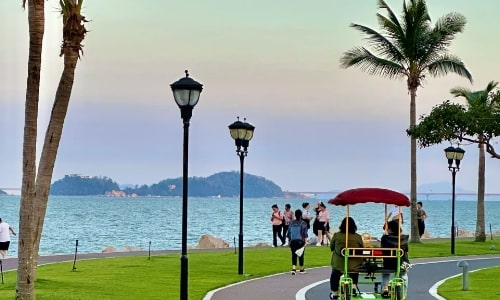
The Zhuhai Grand Theater is the next attraction, and the guide’s commentary focuses on its unique design—two curved shells resembling white dolphins leaping from the sea. He explains the theater was designed by a renowned international firm and is China’s only coastal theater. Pointing to the white glass panels covering the shells, the guide notes they shimmer in different lights and are etched with wave patterns to echo the sea. He adds that the open plaza between the "dolphins" acts as a natural wind tunnel, keeping the area cool. Inside the lobby (open to visitors without tickets), the guide shows the hanging glass sculptures shaped like water droplets and describes the two main venues—one for grand operas and ballets, the other for chamber music. He mentions the theater hosts annual cultural festivals and free open days, highlighting its role as a regional cultural hub. The group takes photos of the theater’s exterior from the coastal promenade, with the guide ensuring the "dolphin" shape is fully captured.
.jpg)
.jpg)
Lunch is a seafood feast at a local restaurant near the theater. The guide recommends dishes based on fresh daily catches: steamed local fish with ginger and scallions, stir-fried clams with black bean sauce, and shrimp dumplings. He explains that Zhuhai’s seafood is known for its freshness, as fishermen bring in their hauls every morning. He also teaches the group how to tell if the seafood is fresh and shares a local custom—dipping steamed fish in soy sauce mixed with fresh lime juice. After lunch, the guide leads the group to the car bound for Foshan, sharing stories about Foshan’s status as a city of martial arts and Lingnan culture.
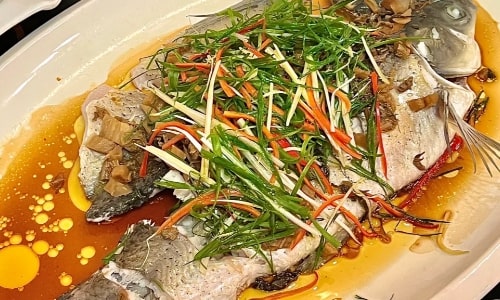

Upon arriving in Foshan, the guide takes the group to the Foshan Ancestral Temple, a 900-year-old Lingnan architectural treasure. At the gate, he points out the intricate stone carvings of lions and dragons, explaining the temple is dedicated to Beidi, the Northern Emperor, worshipped to ward off floods. Leading everyone to the Hall of the Three Purities, the main hall, the guide highlights the dougong wooden bracket system that supports the roof without nails and the color-glazed tile ridges painted with scenes from *Journey to the West*. He points to wood carvings on the beams depicting filial piety stories, noting they once educated illiterate villagers. When the Wing Chun martial arts performance begins, the guide secures front-row seats and explains Foshan is Wing Chun’s birthplace, mentioning that master Ip Man practiced here. He interprets key moves like "chain punches" and "sticky hands" during the show and arranges photos with the performers afterward. The guide also shows the Well of Longevity, giving each member a coin and teaching them to toss it with wishes for good health. Before leaving, he recommends the gift shop’s miniature lion dance heads—Foshan is the origin of Cantonese lion dance.
.jpg)
.jpg)
From Foshan, the group travels to Guangzhou and visits Beijing Road Pedestrian Street. The guide leads a walk along the 2,000-year-old street, pointing out historical relics like exposed ancient road sections and old wells. He recommends famous spots: a century-old herbal tea shop, a traditional calligraphy store, and a snack stall selling radish cakes and rice rolls. After that, the guide escorts the group to the pre-booked Guangzhou hotel, recapping the day’s itinerary and reminding them the next day is free activity. He leaves his contact information and offers suggestions for free-time activities.
.jpg)
.jpg)
Today is the last day of the tour, and you will have free time to arrange your own activities in Guangzhou. You can choose to revisit your favorite attractions during the previous days, or go shopping for souvenirs to take back to your family and friends. If you haven't had enough of Cantonese food, you can look for local snack shops to taste more delicacies. Before your departure, our guide will contact you to confirm your departure time and provide relevant information such as transportation suggestions to the airport or railway station. If you need help with luggage or other matters, the guide will be happy to assist. Finally, the guide will bid you farewell and wish you a smooth journey back home.
Price Per Person in US Dollars
Personalized Travel Consultant
Experience the best of China with our expert travel consultants by your side. With years of local tourism experience, they are not only professional and knowledgeable but also deeply committed to making your trip unforgettable. Your dedicated consultant will craft a bespoke tour plan tailored to your unique interests, schedule, and budget, offering you the utmost flexibility. From the moment you start planning until the end of your journey, they will be in touch, ensuring every detail is perfect and that your trip runs smoothly.
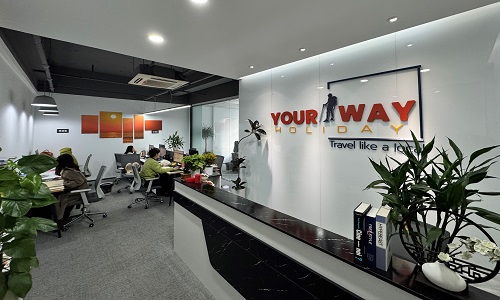

Exceptional Local Guides
Discover it through the eyes of our exceptional local guides. All certified and experienced, they are passionate about sharing their deep knowledge of attractions, history, and culture. Whether you're interested in hidden gems or popular sites, they know the best places to visit. They can recommend top local restaurants, unique shopping spots, and must-see shows. Beyond just guiding, they provide enriching insights into the history, customs, and authentic daily life, making your experience truly immersive.
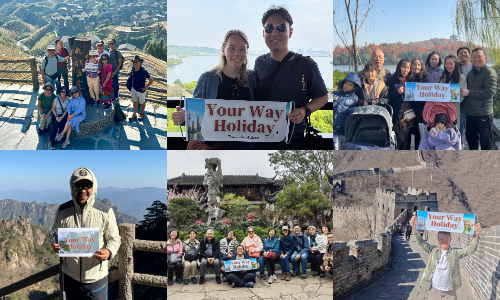

Premium Private Transportation
Travel in comfort and style with our premium private transportation. We offer a fleet of air-conditioned, non-smoking, clean, and meticulously maintained vehicles, all less than four years old. Our professional drivers, all locals with over a decade of driving experience, are friendly, courteous, and dedicated to your safety and comfort. Depending on your group's size, we provide a range of vehicles, including sedans, SUVs, business vans (MPVs), and spacious buses, all with ample luggage space.
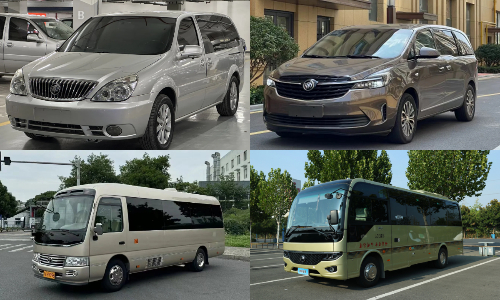

Authentic Dining Experiences
We prioritize genuine local culinary experiences over pre-arranged tourist restaurants. Our local guides will recommend the best local restaurants where you can savor authentic flavors. This approach ensures you enjoy the freshest, most authentic meals, tailored to your preferences, and experience the true essence of the local cuisine. Whether your dietary needs are vegetarian, Muslim, Chinese, Western, Jewish, or Indian, we have excellent options to make every meal a delightful part of your journey.
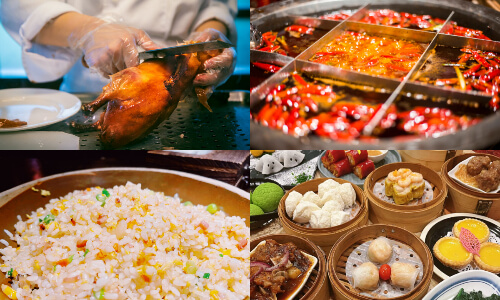
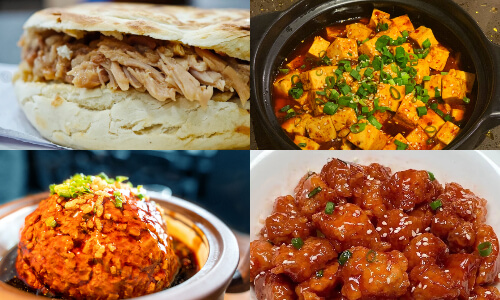
Duration:8 Days, 7 Nights
Attractions(Cities):Guangzhou, Zhaoqing, Kaiping, Zhuhai, Shenzhen
Tour Style:Embark on an unforgettable 8-day travel tour from Hong Kong to Guangdong China, where history, culture, and modernity seamlessly converge. The tour will guide you through the vibrant cities of Guangzhou, Shenzhen, Zhaoqing, Kaiping, and Zhuhai, each offering its own distinctive charm. From the ancient streets of Guangzhou's Chen Clan Ancestral Hall to the coastal beauty of Shenzhen’s Dameisha Beach, you will explore architectural masterpieces, historical landmarks, and breathtaking natural scenery. This journey not only offers in-depth cultural immersion but also showcases Guangdong's rapid transformation into a modern hub. With the expertise of a professional guide, enjoy smooth transitions between destinations, insightful commentary, and thoughtful recommendations that ensure a seamless travel experience. Whether delving into Shenzhen's contemporary vibrancy or reflecting on the tranquil beauty of Zhuhai's waterfront, this tour will leave you with a deep appreciation for the richness of Guangdong's past and present.
Duration:2 Days, 1 Night
Attractions(Cities):Huizhou West Lake Scenic Area, Xunliao Bay, Dameisha Beach, Lianhuashan Park, Shenzhen Bay Park, Splendid China Folk Village
Tour Style:This 2-day tour from Hong Kong offers a perfect blend of cultural exploration, scenic beauty, and modern highlights. Begin your journey in Huizhou, where you'll discover the natural beauty of West Lake and the serene Xunliao Bay. Stroll through West Lake’s classical gardens and learn about its cultural significance, then unwind at the picturesque Xunliao Bay, a coastal retreat with rich historical ties. The next day, immerse yourself in Shenzhen’s dynamic growth and modern attractions. Explore Damesha Beach, Lianhua Mountain, and Shenzhen Bay Park, each offering a unique blend of nature, history, and urban design. Throughout the tour, enjoy seamless transfers, expert commentary from your guide, and a personalized experience that highlights the region’s history, culture, and local flavors. Perfect for those seeking an enriching yet efficient escape, this tour offers the ideal balance of sightseeing and relaxation, providing a comprehensive experience of Southern China.
Duration:3 Days, 2 Nights
Attractions(Cities):Shenzhen Bay Park, Nantou Ancient City, Shenzhen Museum, Dapeng Fortress, Melania Town, Qianhai Stone Park, Window of the World, Splendid China Folk Village, Gankeng Hakka Town, Judiao Beach, Dafen Oil Painting Village, Sea World
Tour Style:Embark on an unforgettable Shenzhen day tour from Hong Kong, where you’ll experience the dynamic blend of history, culture, and modern innovation that defines this vibrant city. Over the course of three days, the tour offers a carefully curated selection of iconic landmarks and hidden gems, all guided by a professional local expert. From exploring ancient city walls to discovering cutting-edge architecture, each day brings a new perspective on Shenzhen's rapid transformation. Alongside cultural insights, you’ll indulge in the city's finest culinary experiences and enjoy seamless transportation, ensuring a relaxing yet immersive journey. This tour style is designed for those seeking an enriching and efficient way to explore Shenzhen, all just a short distance from Hong Kong.
Duration:13 Days, 12 Nights
Attractions(Cities):Guangzhou, Guilin, Shanghai, Xi'an, Beijing
Tour Style:This 13-day tour through China invites you to embark on an unforgettable journey, where history, culture, and natural beauty come together in perfect harmony. Starting in Guangzhou, explore the city’s rich cultural heritage and architectural wonders, from the historic Chen Clan Ancestral Hall to the modern marvels of Huacheng Square. As you travel through Guilin and Yangshuo, the landscape will captivate you with its majestic karst mountains and serene Li River cruise. The vibrant streets of Shanghai offer a striking contrast, where cutting-edge innovation meets colonial charm. In Xi'an, you’ll walk in the footsteps of emperors, visiting the Terracotta Warriors and exploring ancient city walls. Finally, Beijing welcomes you with its imperial grandeur, from the Forbidden City to the mighty Great Wall. This immersive tour of Guangzhou and China ensures a well-balanced blend of cultural insights, breathtaking scenery, and timeless landmarks, designed to leave you with lasting memories of one of the world’s most fascinating destinations.
Duration:7 Days, 6 Nights
Attractions(Cities):Hongkong, Guangzhou, Shenzhen
Tour Style:Embark on a captivating 7-day Guangdong tour from Hong Kong, where the bustling city streets meet serene landscapes and centuries-old heritage. This immersive journey seamlessly blends the dynamic energy of Hong Kong with the rich history and modern marvels of Guangzhou and Shenzhen. From exploring ancient temples and cultural landmarks like the Chen Clan Ancestral Hall to marveling at the futuristic skyline of Shenzhen, each day offers a new adventure. Discover lush natural wonders such as Wutong Mountain and vibrant cultural villages like Splendid China Folk Village, all while being guided by expert professionals who bring the region’s fascinating stories to life. Whether you’re hiking scenic peaks, savoring Cantonese delicacies, or exploring global landmarks, this Guangdong tour from Hong Kong promises an unforgettable experience that unveils the very best of Southern China.
Wechat: Chinaprivatetour
24 Hours Hotline:
+86 137-3541-1378
(Your Privacy is Protected)
1 to 1 tailor-made service from our professional travel advisors for the most sophisticated
Constantly excellent reviews for attraction, hotel and service Competitive price
Local experts provide quality tours Best selected knowledgeable local guides Authentic local restaurants
7*24 hours available to create you a worry-free tour. No Hidden Fees and absolutely no pressure to buy. Secured








A 7-day exploration through Guangzhou, Hong Kong, Macao, and Zhuhai offered a perfect blend of culture, history, and modernity. Starting in Guangzhou, the journey began with visits to the Chen Clan Ancestral Hall and Huacheng Square, offering a glimpse into the city’s heritage. In Hong Kong, the vibrant energy of Victoria Peak, the Palace Museum, and Disneyland was balanced with a tranquil visit to West Kowloon Art Park. Macao's charm came alive through its Venetian resort, the historical Coloane streets, and stunning views from the Grand Taipa Viewing Platform. Zhuhai added its own flavor with the iconic Fisher Girl statue and Yeli Island. Every stop was made even more enjoyable by the knowledgeable guides, who shared fascinating insights and ensured smooth transitions between destinations. Thanks to the careful planning and attention to detail, the trip was seamless and filled with memorable experiences in each city.
The 7-day tour across Guangdong, Hong Kong, and Macao was well-organized, with great balance between sightseeing and free time. We visited some amazing places like the Hong Kong Palace Museum, the Venetian in Macao, and the iconic Zhuhai Fisher Girl. Our guides provided fantastic insights throughout, and the smooth transitions between cities made the trip so easy. Would definitely recommend this tour!
I had an amazing time on this 7-day trip across Guangdong, Hong Kong, and Macao. Each day was packed with so many cool experiences, from the cultural wonders of Guangzhou to the bustling streets of Hong Kong, and the glamorous resorts in Macao. In Guangzhou, we got to visit historic spots like the Chen Clan Ancestral Hall and Huacheng Square, before heading to Hong Kong, where we explored Victoria Peak and the Hong Kong Palace Museum, then hit up the fun of Disneyland. The highlight in Macao was definitely The Venetian, where we felt like we were in Venice! Each city had its own unique vibe, and the guides really helped bring everything to life.
What made this trip extra smooth was the professionalism of the guides. In each city, we had a different guide, and they all made sure to provide local insights and smooth transitions from one place to the next. The drivers were great too, making the travel between cities hassle-free and comfortable. Whether it was the stunning views from the Hong Kong Sky100 or the charming streets of Zhuhai, everything was well-organized and stress-free. The whole experience was definitely unforgettable, and I couldn’t recommend this trip enough for anyone looking to see the best of this vibrant region!